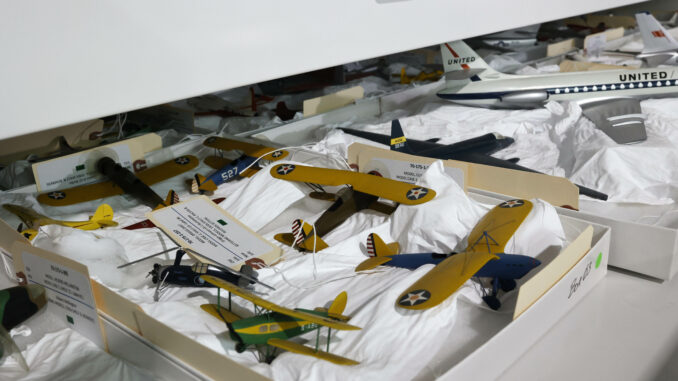
PRESS RELEASE
Visitors to The National Museum of the U.S. Air Force™ are often stunned and amazed by the size of the 350 aerospace vehicles throughout the four buildings on the museum grounds. From the WWI-era Caproni Ca.36 bomber (74-foot wingspan) to the largest bomber ever built – the Convair B-36J Peacemaker (230-foot wingspan), to the North American XB-70 Valkyrie mach-3 nuclear bomber (186 feet long), these huge flying machines fill the galleries.
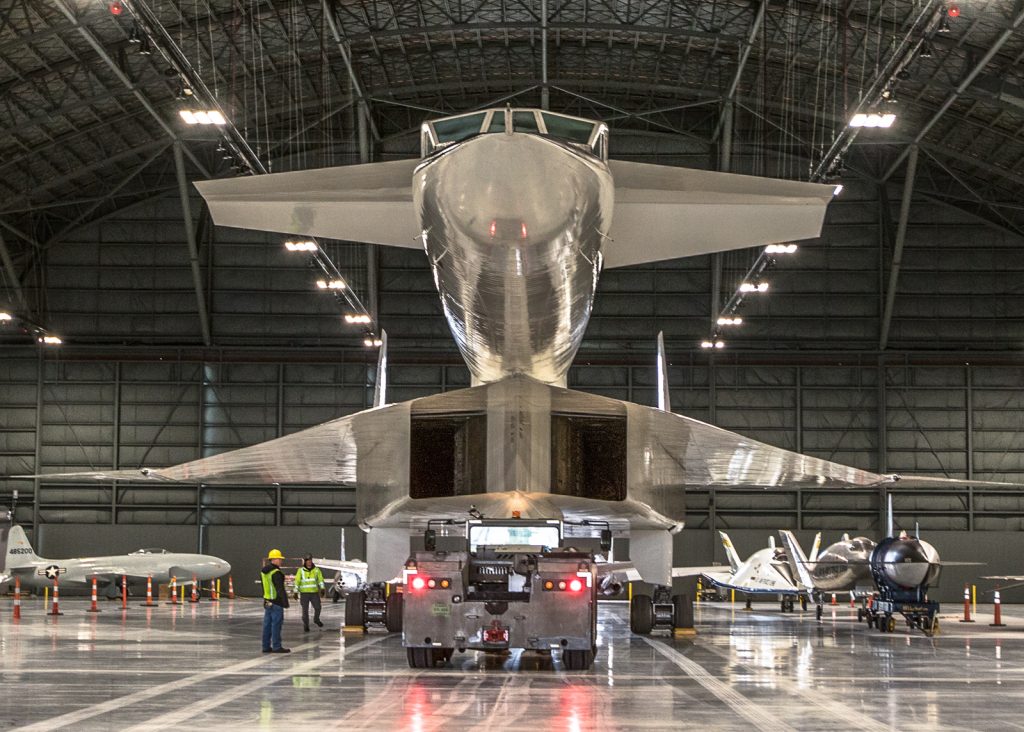
However, what often goes unnoticed in the museum is a collection of aircraft nearly twice the number of the larger aircraft: The Eugene W. Kettering Model Aircraft Collection. This diverse collection of 624 models ranges in size from 4 inches to nearly 3 feet in length and includes both military and civilian aircraft from 10 countries. In 1930, Kettering joined General Motors as a research engineer and became a leading figure in the evolution of the modern diesel locomotive. After nearly 30 years with General Motors, Kettering retired and he and his wife, Virginia, devoted their energies to a wide range of philanthropic activities.
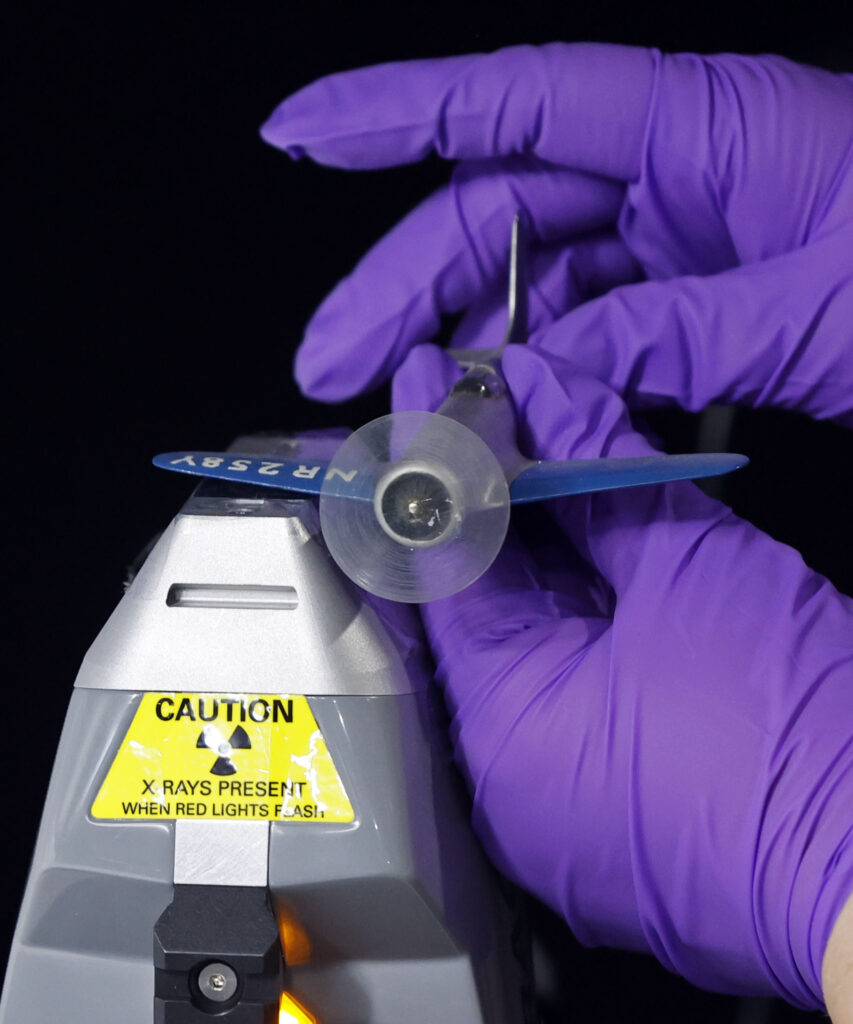
When the Air Force Museum Foundation was created in 1960 to fund the design and construction of a new Air Force Museum, Kettering continued his family’s interest in aviation and became the Foundation’s first chairman. He actively assisted in raising funds to construct the current location of the Air Force Museum, now the National Museum of the U.S. Air Force, which opened in 1971. Kettering supported the museum in many other ways, including the long-term loan of the model airplanes from his personal collection in 1962. The models on display give visitors a sense of the technological growth of aviation at a glance.
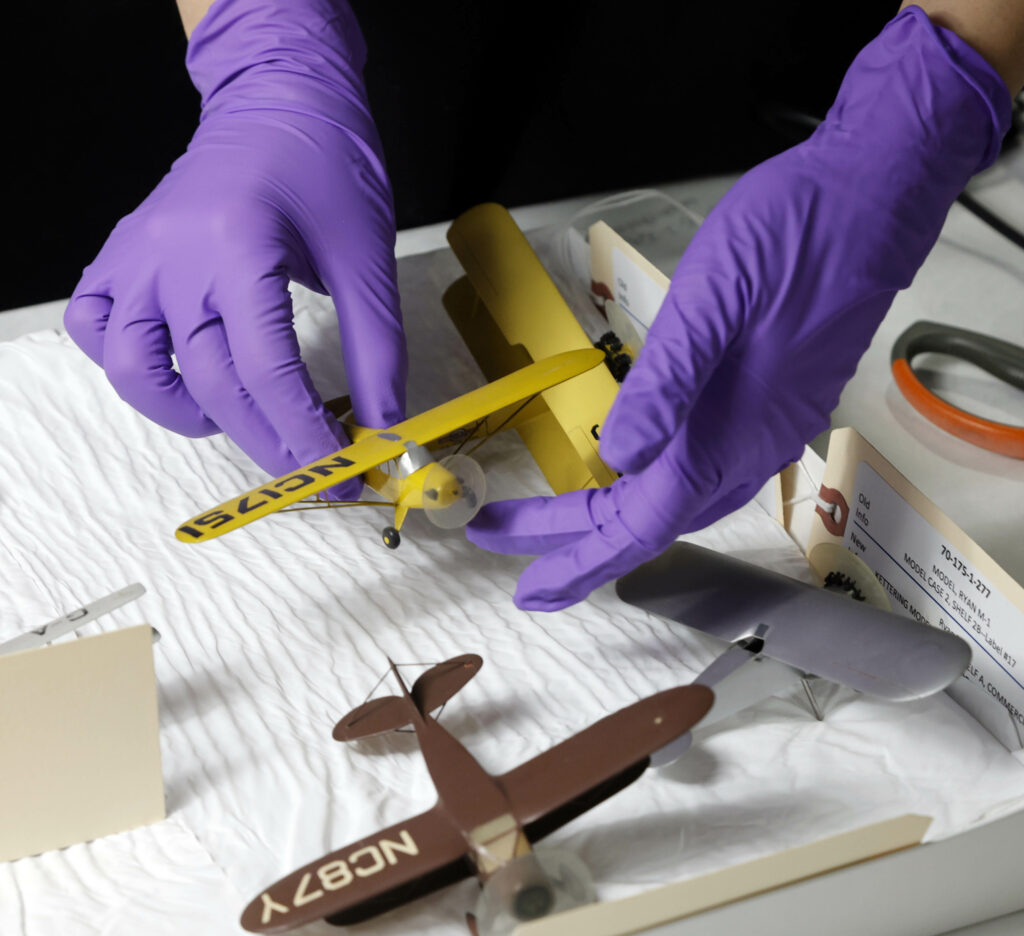
The primary model exhibit has been on public display for several decades located in six large cases in the hallway connecting the second and third buildings across from the Berlin Airlift exhibit. Some of the models in this unique collection were built as early as the 1930s. Through the years the models started to show signs of light damage and deterioration, and in 2022 a thorough assessment of their condition was completed. Following the assessment, the museum’s Collection Management Division recommended that the models be removed for conservation.
According to Museum Objects Conservator Jennifer Myers, “The models on exhibit were showing signs of light damage with fading and discoloration of the painted surfaces, especially where there was red paint. The assessment found that many of the models showed signs of paint cracking or chipping. This is due to the models being constructed primarily of wood.”
Historically, models were crafted out of wood which has inherent issues because it reacts to the environment. Modern model makers primarily use plastic or metal which are not as sensitive to environmental changes.
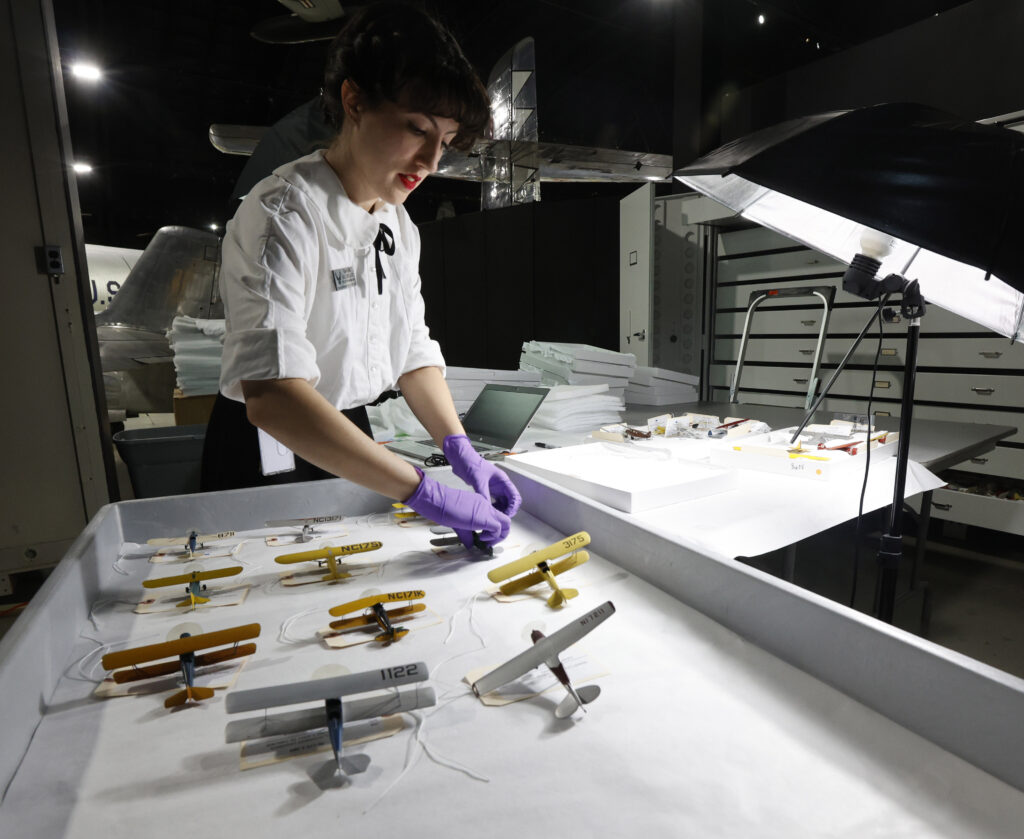
“A number of these models are extremely delicate,” Myers added. It’s not unusual to see the adhesives used on these models breaking down over time, resulting in propellers starting to fall off and struts or wheels breaking off. Little pieces of string used to create wheel spokes are now deteriorating. Thin strips of metal used for struts are beginning to corrode. Models with propeller discs are now turning yellow and warping from their original shape. Due to the sheer size of this collection, Collection Management Division personnel realized very quickly that they could not undertake treatment of the models in-house. After researching many companies to complete the huge task of conserving this unique collection, the ICA conservation firm in Cleveland, Ohio was selected.
“However, before we could send this collection out for contract conservation, we had to identify all known hazards. Due to the age of these models many of them are coated with lead paint,” Myers explained. To confirm the lead tainted paint, Myers utilized an X-ray fluorescence scanner to read the lead levels. Additionally, Radiation Safety Officer, Jeremy Gallogly, scanned all 624 models and determined that they contained no radioactive materials. This information was recorded and subsequently provided to the conservation contractor.
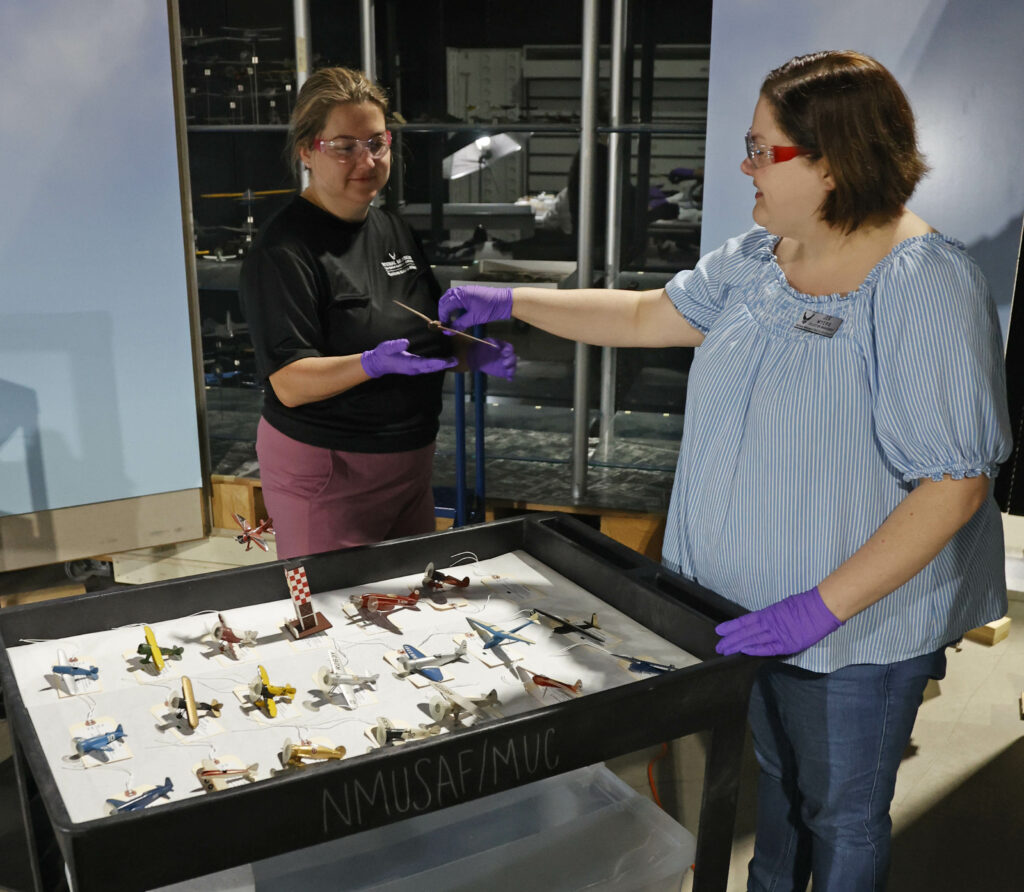
“The good thing about going with a company like this is that they can handle the volume of artifacts in this collection. Their conservation staff spans the entire range of specialties required to treat all 624 models,” said Myers. Due to the skills and experience of ICA, museum staff are confident they will do an admirable job of conserving this unique historical collection.
The Kettering Collection is a prime example of a model exhibit that does exist as a complete collection. It is truly the total sum of its parts, displaying a sweeping history of aviation in miniature but grand in diversity type, shape, size, and technology.
When the decision was made to conserve the models, museum leadership directed that a new display case be built in Kettering Hall to house the collection. The new case is no less grand as it stretches almost completely across the east wall of its namesake’s Hall and includes humidity control capabilities and lighting for better preservation of the models.
The Kettering model collection is expected to be fully installed in the new case in the spring/summer of 2025. Continued care of these historic artifacts was made possible through generous support by the Air Force Museum Foundation*. (*Federal endorsement not implied.}
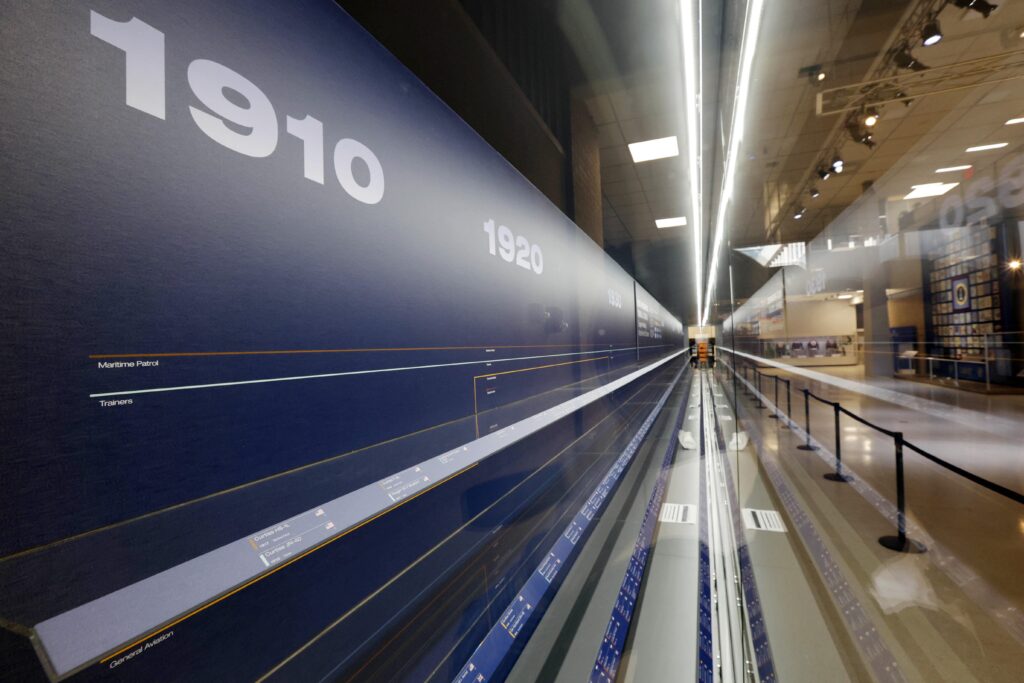
The National Museum of the U.S. Air Force, located at Wright-Patterson Air Force Base near Dayton, Ohio, is the world’s largest military aviation museum. With free admission and parking, the museum features more than 350 aerospace vehicles and missiles and thousands of artifacts amid more than 19 acres of indoor exhibit space. Each year thousands of visitors from around the world come to the museum. For more information, visit www.nationalmuseum.af.mil.


Be the first to comment
Graphic Design, Branding and Aviation Art